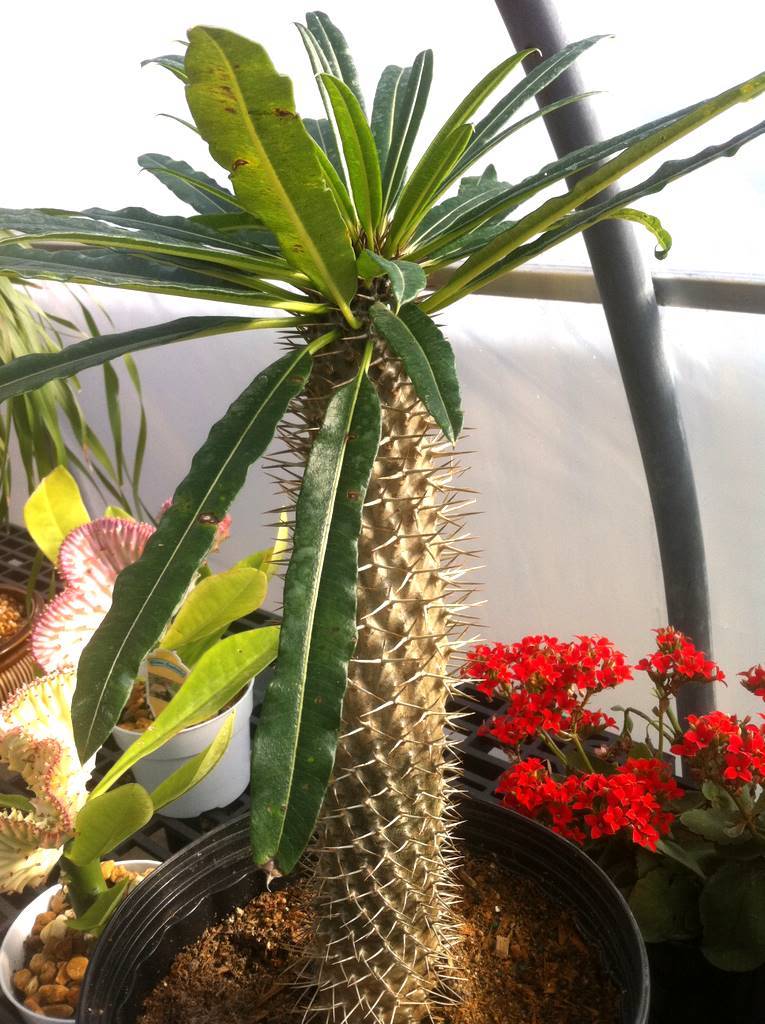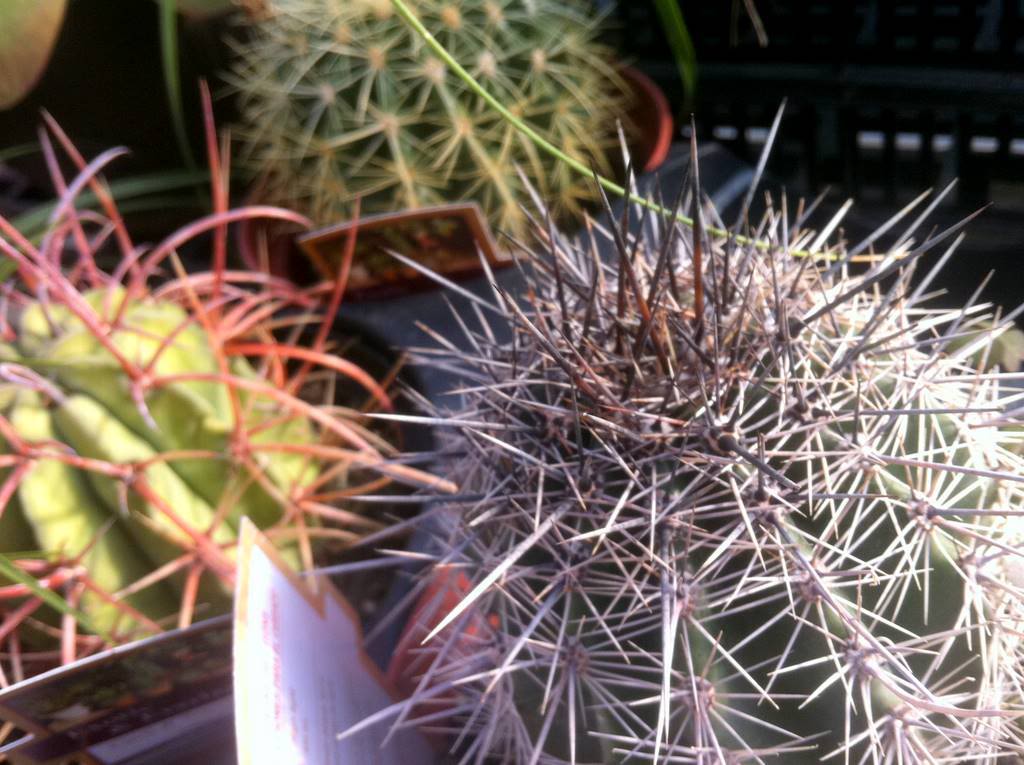This weekend when I cleaned up some veggie beds to plant some lettuce and other cold-tolerant greens I had to make a trip to a local garden center as I was all out of organic fertilizer. Although I walked in, grabbed my Garden-Tone and could have been out of there in about two minutes, I decided to look around the greenhouses. I knew they'd have mostly houseplants displayed, but plants are plants and it couldn't hurt to spend a few minutes looking, right?
What I saw was table after table of plants that lots of my garden blogging friends in warmer climates can easily grow outdoors, and I have to admit I can understand why. These plants look pretty nice when seen in photos of faraway gardens, but in person... wow.
The first one that really caught my eye was this Aloe:
There was one plant in the main sales area, and about a dozen or so in the sunny (and very warm) greenhouse. Do I need to point out that every single plant I'm showing today would never survive one of our St. Louis winters outdoors -- even a mild one like this year?
I thought for sure that I got the plant tag in one of these photos, or maybe I just thought "oh, I'll never forget that name!". Well, I forgot. I know it's an Aloe, but beyond that I'm clueless.
Here's an Agave:
It's probably something pretty common, or maybe one of those unknown hybrids. In any case, I can see why some warm-climate gardeners love this genus (and Aloes too).
I have no idea what this one is, but it is certainly deadly-looking:
Actually, I think that there is a really large specimen of this tree (or something very much like it) growing in the Climatron at the Missouri Botanical Garden. This little one is impressive enough, and something that I couldn't grow in my current house -- not enough south-facing windows (or bandages).
I'd actually need to set up a few more high-output grow lights if I wanted to bring any one of these plants home today, and I just don't have the space for that.
This one is really wonderful -- a giant prickly caterpillar:
I didn't bother looking at every plant tag, as I didn't want to torture myself unduly. Plus, did I mention how hot it was in there?
The amazing didn't stop with that last one either:
Was this a bromeliad? I really don't remember, but that flower is incredible, isn't it?
This is not a macro shot -- those leaves really are that large:
My next house is going to have a brightly-lit conservatory, or a large greenhouse. There are just too many amazing plants that can't take the cold.
I almost remember what this one was called:
Almost, but not quite. I do know that the plant in back is an Elephant Bush (Portulacaria afra), or at least I'm pretty sure that's what it is. I have one that's a bit smaller than that though.
The final plant I photographed was a red version of the previous one:
I could have "window shopped" for hours in here, but I was really in the middle of a project, and I probably would have ended up buying something that would have to suffer a few months in my basement before getting put outside on the deck for the summer.
Maybe that's not such a bad plan after all... I wonder what time that garden center closes tomorrow?
If you know some of the names of these plants, please enlighten me in the comments! I'm talking to you Gerhard and Loree! :-)
.











The plant you called "deadly looking" is a Pachypodium and the last two shots look like Euphorbia trigona.
ReplyDeleteWhat a great selection! You were definitely drawn to the same plants I would have gravitated towards. I have the first aloe (it's called 'Pink Blush') and it does look like that with good light. It also grows well in the shade but doesn't have that pink margin then.
ReplyDeleteThe agave is Agave gypsophila, and I want that one!!
'Pink Blush' -- I knew it was something obvious that I couldn't forget! :-)
ReplyDeleteYep, you've got the bug...pure and simple. I bet you're pricing lights or a greenhouse right now aren't you?
ReplyDeleteI agree that the last two shots are Euphorbia trigona and Gerhard called the Agave. The plant with the large leaves (with a touch of pink) is a Kalanchoe, possibly K. thyrsiflora. You've got great taste!
I can imagine how you felt with those plants difficult to grow in your climes but very easy with us, and outdoors too! We fell the same when we see your snowdrops, crocus, pansies, lithops, etc. It is amazing how we always want to have what is difficult to acquire! LOL. I think that succulent you call 'tree' is also a Euphorbia, very similar morphology with Euphorbia millii though much bigger.
ReplyDeleteLoved seeing some of the plants that grow in the wild in my country. I used to take them for granted and am happy to see that they are appreciated in other parts of the world. Happy gardening!
ReplyDelete